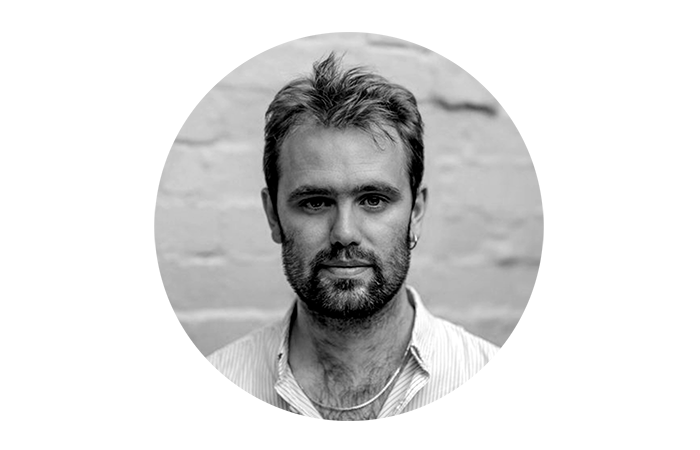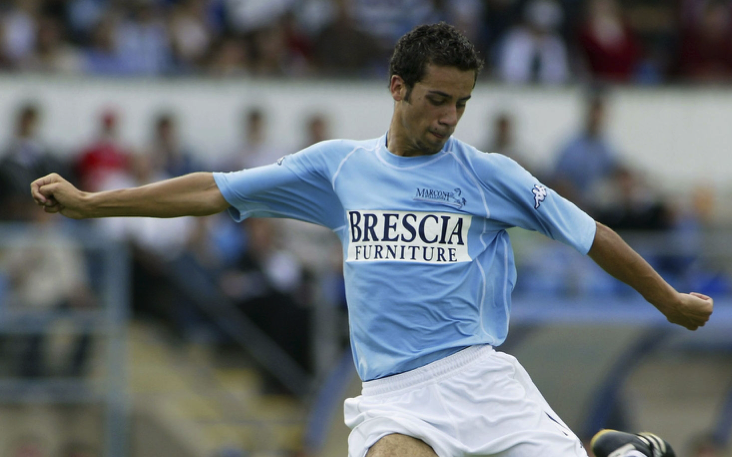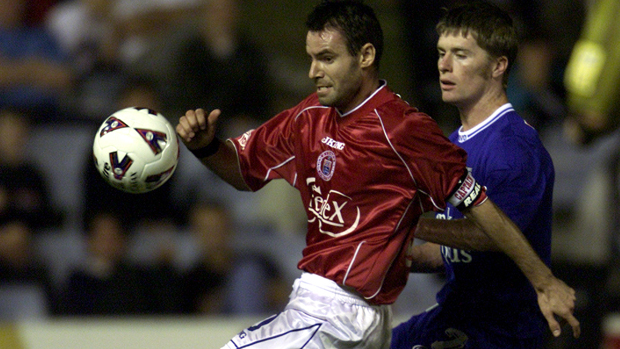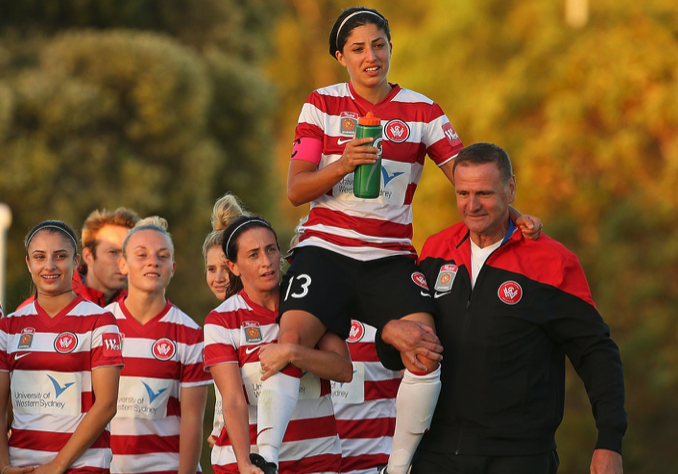Joe Gorman is a journalist and author. His first book, The Death and Life of Australian Soccer, was hailed as ‘one of the best and most important written on Australian sport’ by The Age, and long-listed for the 2017 Walkley Book Award. With the PFA, Joe will explore various issues impacting Australian football.

By Joe Gorman
Twenty years ago, on the first day of December 2001, a skinny 18-year-old striker named Alex Brosque made his first senior appearance for Marconi Stallions in the National Soccer League. He had frost-tipped hair and a boy band goatee, but he looked good in a sky blue jersey.
Brosque, the son of Uruguayan immigrants, lived a couple of streets away from the Marconi club in the family home where he was raised. In those days, when the houses were sparser and parts of Sydney’s western suburbs still felt semi-rural, he could walk in a straight line from his front door to Marconi Stadium. Though nobody could have known it at the time, Brosque was one of the last juniors to come through the Marconi system and play for the club in the national league.
“It was a dream to play in that stadium,” he recalls. “Marconi Stadium, at the time, was one of the best in the country. I came on with not long to go – maybe ten or 15 minutes – but it didn’t matter. It was my debut as a professional footballer.”

That summer, another striker named Ante Miličić became the most expensive player in NSL history after transferring from his boyhood club Sydney United to crosstown rivals Sydney Olympic. Miličić, who was captain of Sydney United, was hesitant to leave his beloved family club. But he knew, deep down, that the glory days were over.
“I’ll never forget, one of my first training sessions with Sydney Olympic was on a Saturday, and straight after the training session I drove all the way to Edensor Park to watch United play,” says Miličić. “I was playing for Olympic but my affection for United was very strong.”
By early 2002, the stench of death was already engulfing the NSL. Many of the competition’s traditional clubs were struggling to make ends meet. At Marconi, Brosque’s debut had been expedited after the football department’s budget was slashed due to the social club’s financial difficulties. At Sydney United, club bosses had given their blessing for Miličić to join Olympic so that the cash-strapped club could bank the six-figure transfer fee.

The game’s two governing bodies, Soccer Australia and the Australian Women’s Soccer Association, were run as separate entities – and both were effectively broke. The Women’s NSL, which pitted state institutes against one another, provided even less exposure and financial remuneration to the players than the men’s competition.
On Sunday 17 February 2002, the NSW Institute of Sport met the ACT Academy of Sport as a curtain raiser to Sydney Olympic’s Round 19 clash against Newcastle. As Miličić prepared for his second home game in front of the Olympic fans, a precocious 15-year-old striker named Catherine Cannuli came off the bench for NSW to score a match-winning double.
Cannuli, like Brosque, was a left-footer with exquisite technique who’d grown up at Club Marconi. She looked up to Marconi players like Christian Care and Brendan Renaud and Vlado Zorić. The walls of her bedroom at her home in Sydney’s southwest were covered with posters of Christian Vieri, who played junior football at Marconi before making it big in Italy. The Cannuli family were Marconi bluebloods. “There wasn’t a Marconi game that we missed,” she says.
Brosque, Miličić and Cannuli were all raised in the heartland of Australian football, that golden triangle of Sydney currently bordered by the M7 to the west, the M5 to the south and the M4 to the north. From these jumbled, sprawling suburbs along the Cumberland Plain sprang some of Australia’s most talented footballers, including the likes of PFA Life Members Harry Kewell, Ante Čović and Željko Kalac; Socceroos legends Mark Bosnich, Paul Okon, Mark Schwarzer, Mile Jedinak and Tim Cahill; and Matildas Heather Garriock and Alanna Kennedy.
Miličić, who was inducted as a PFA Life Member in 2009, grew up between the Summer Hill Croatian Catholic Church and the Croatia Sports Centre at Edensor Park. Brosque belonged to the Latin American communities bonded by asado barbecues, Fairfield and football. And Cannuli came from Casula, at the crossroads between the west and the southwest. “There were so many clubs within that region: Marconi, Sydney United, Sydney Olympic … even APIA Leichhardt,” says Brosque.
This is a story of three Sydneysiders and the shifting landscape of professional football in Australia’s biggest city. That year, Brosque established himself in the Marconi side, going on to win the NSL U-21 Player of the Year in 2003 and 2004. Miličić scored the winning goal for Olympic in the 2002 NSL Grand Final, earning himself the Joe Marston Medal for player of the match. And Cannuli went to the 2002 FIFA U-19 Women’s World Championships with the Young Matildas.
Two decades on, Brosque is a 200-plus game Sydney FC icon, Miličić is the Head Coach of expansion club Macarthur FC, and Cannuli is the Head Coach of the Western Sydney Wanderers women’s side. This week will be a festival of football in Sydney as the Wanderers play APIA Leichhardt in the FFA Cup on Tuesday and Sydney FC meet Macarthur on Wednesday, before the Wanderers host Macarthur in the A-League Men and Sydney FC play the Wanderers in the A-League Women on Saturday. All three past players will be involved: Brosque as a pundit for Channel 10, Cannuli and Miličić in the dugouts for their respective teams.
The seeds of this transformation were planted two decades ago, during the 2001-02 season, when the players established a subsidiary company called PFA Management to commission extensive nationwide market research into the game and, ultimately, relaunch the NSL as a new competition called the Australian Premier League.
“We were at this stage where the PFA was strong, but the governance and business of the game were weak,” recalls former PFA chief executive Brendan Schwab. The aim, he says, was “to move the game from politics to knowledge.”
In December 2002, the PFA published a 15-page document titled Australian Premier League: For The Fans. It was, as Schwab acknowledged at the time, “the most significant investment” the players had ever made in Australian football. It was also the most comprehensive piece of research into the structure and function of Australia’s national league, proof that the players were concerned with the game’s long-term future and not only their own wages and conditions. As the late journalist Michael Cockerill observed in an article for the Sydney Morning Herald, “the rank-and-file players have tired of the endless chaos within their profession.”
From 1977 and 2002, more than 20 clubs dropped out of the NSL. In Sydney alone, former national champions Sydney Hakoah, St George Budapest and APIA Leichhardt had either folded or returned to the local leagues. During the 2001-02 season there were five clubs in Sydney, but none consistently drew a crowd of more than a few thousand people.
Alarmingly, the PFA’s research found that 100 percent of players under the age of 22 saw no prospect of a career in the domestic competition. Miličić, who was 28, had just returned from his stint abroad in the Netherlands and Croatia, but teenagers Brosque and Cannuli both wanted out. Cannuli was offered a spot at a college in the USA, which in those days was the traditional pathway for female players, but her parents couldn’t afford to let her go. Brosque, meanwhile, was preparing himself for a move to Europe.
“The way of thinking, back then, was to make a career out of playing football and set yourself up financially, you had to go overseas,” he recalls. “You played in the NSL for a couple of seasons and then tried to get a gig abroad.”
Among other things, the APL model suggested the competition should begin again with ten clubs placed in strategic markets throughout the country. The most drastic changes were to be implemented in Melbourne and Sydney, the nation’s two biggest cities. It is worth remembering that the PFA’s research suggested three professional clubs should operate in Sydney. Now, after 17 seasons of the A-League Men and several expansion processes, that is precisely where the professional game in Sydney finds itself.
The scale of the transformation has been enormous. New fans have materialised and players such as Miličić, Brosque and Cannuli have had to recalibrate their loyalties to adjust to the new reality. For Miličić, who is working at Macarthur with long-serving Sydney United director Sam Krslović, the echoes of the past remain ever-present. Yet over the past two decades he has worked for five different clubs in Sydney alone: United, Olympic and Parramatta Power in the NSL; the Wanderers and Macarthur in the A-League.
Miličić played in Grand Finals with both Olympic and Power, though the experiences with both clubs were very different. Olympic, he says, “had a passion and a culture and an identity,” while at Power “it was purely business. They were a club I didn’t like. That, for me, was when football became a job.” In the end, he says, “nothing came close to playing for Sydney United.”
Brosque, who played nine seasons for Sydney FC while living in the western suburbs, has seen the game’s centre of gravity shift from the suburbs to the city to three geographically distinct hubs across Sydney. “There was some resentment when Sydney FC came in and clubs like Marconi and Sydney United were almost forgotten,” he says. “I think that’s why we saw so many people jump onto the Wanderers bandwagon when they came in, because many people never felt connected to Sydney FC.”
One of those people was Cannuli, who – unlike Brosque – never fell in love with Sydney FC despite playing for the club. “To be totally honest, I didn’t even follow the A-League in the beginning,” she recalls. “But as soon as I knew that the Wanderers was forming, I felt a special connection to the club. I don’t think I’ve missed many Wanderers Men’s games since. I flew to Brisbane and Adelaide when they made the Grand Finals and I’ve been on away trips to Melbourne. It just reminds me of the days playing at Marconi.”

In addition to her role at the Wanderers, Cannuli also works as Technical Director of the women’s football program at the Southern Districts Football Association in southwest Sydney. She lives in Carnes Hill, not far from where she grew up, which places her in the dividing line between Wanderers and Macarthur territory. In fact, her house is nearer to Macarthur’s home ground in Campbeltown than the Wanderers’ stadium in Parramatta.
“There are families that I know who’ve become Macarthur members. That club is now grabbing another demographic from Camden and Picton and Wollondilly areas,” she says. Miličić agrees: “There’s so much potential in that area, because of how quickly the region is growing.”
Brosque, who is building a house in Horsley Park on the edge of the Western Sydney Parklands, still supports Sydney FC despite his proximity to the Wanderers and Macarthur. “When you look around the world, where they have generations of history, a child is born and they get a club jersey from their parents,” he says. “We’re starting to get that here now. Kids are coming to the game with the same shirt as their parents.”
Brosque’s own family are part of that story, with one side passionately supporting the Wanderers and the other sticking firm to Sydney FC. Not long ago, as he drove down Restwell Road, he pointed out Marconi Stadium to his young daughters and tried to explain that this is where it all began. He saw their blank looks and changed the subject. “They couldn’t get their head around it, because it’s not on TV so they can’t connect with why I used to play there,” he shrugs.
Still, after all these years, Brosque is proud to have played in both iterations of Australia’s national league. The frost tips are gone and the goatee has grown into a fully fledged beard, but the son of Uruguyans still looks good in La Celeste – whether it be the colour of his ancestral country, Marconi or Sydney FC. “I started and finished my career in sky blue,” he says happily.
Read more of Joe Gorman’s work:
📰 Beattie Goad, professional soccer player and aspiring doctor – The Long Read by Joe Gorman
📰 The Long Read by Joe Gorman: Australian football’s Indigenous engagement
📰 The Long Read by Joe Gorman: Wellington’s relocation
📰 The Long Read by Joe Gorman: Carroll Roar’s unsung hero
📰 The Long Read by Joe Gorman: Chasing records with Milos Degenek
📰 The Long Read by Joe Gorman: Reactivating the Sydney Derby
📰 “Enjoying the moment”: James Holland on his return to the Socceroos – The Long Read by Joe Gorman







